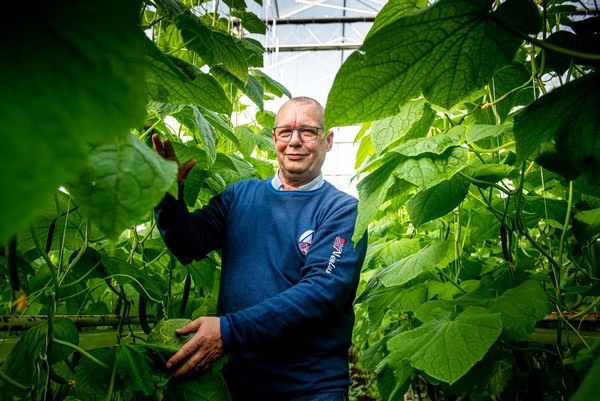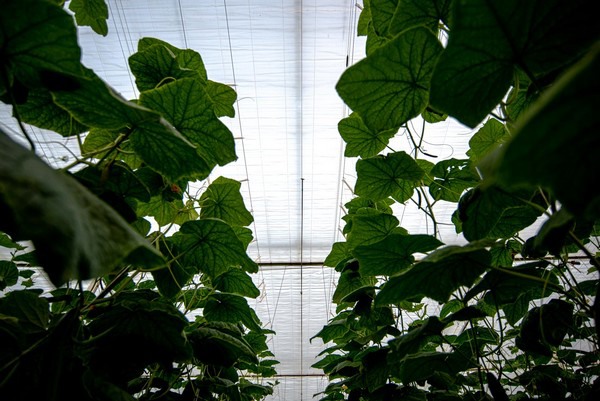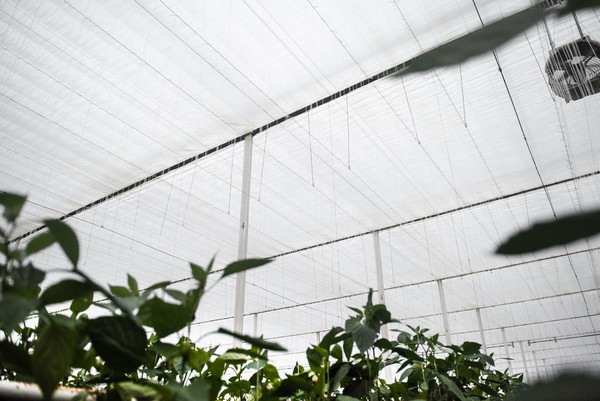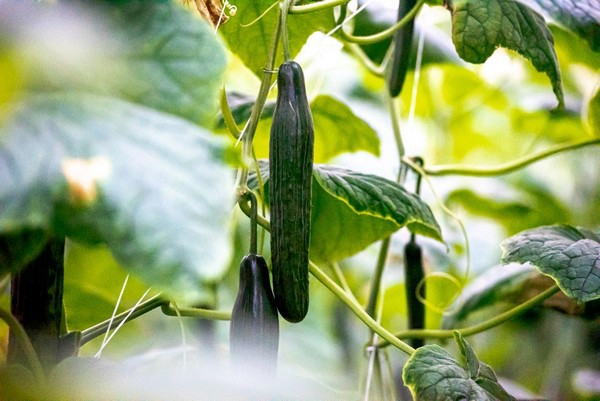Bio Kwekerij Frank de Koning is a modern biodynamic greenhouse horticulture company based in Voorne-Putten in the Netherlands. Crop manager Wim van Marrewijk aims to achieve the best possible crop resilience through his cultivation strategy.
Across four different locations with a total of 11.4 hectares, this organic nursery grows various types of bell pepper, tomato, cucumber, and other organic and biodynamic greenhouse crops. All their production meets the strict requirements of SKAL and Demeter certification.

Scientific approach
“We are the largest biodynamic greenhouse horticulture company in the Netherlands,” says Cultivation Manager Wim van Marrewijk with some pride. Wim has taken an active interest in organic farming for over 25 years and has been working for Frank de Koning since 2017. “From the outside, we may look like a conventional greenhouse, but inside everything we do is based on organic and biodynamic principles. That includes the concept of circularity and the relationship between the plants, the soil, and the cosmos. For example, we use preparations that ensure that life energy enters the crop. That may sound a bit unscientific, but if you research it carefully, you will see that it is all scientifically correct. And the fact that we manage to keep pace with conventional growers in terms of both quality and quantity, and sometimes even outperform them – that’s the ultimate proof.”

Growing with risks
As crop manager, Wim is responsible for achieving results inside the greenhouse, and he aims to improve those results every year. But he often comes up against some major challenges. “There are a lot more potential risks in organic growing than in conventional growing. And those risks are also bigger because you have far fewer options for putting things right again. When you can get everything right, you can earn a good living. But you can also face some major challenges from one day to the next. Last year, for example, we had successive problems with slugs and aphids. Things like that can really set you back, and suddenly you end up losing a lot of your yield. But it’s all part of the game.”

Climatological challenges
Organic cultivation involves the use of compost and organic fertilizers as well as the preparations prescribed by the Demeter method. The use of crop protection products is not permitted, and in Europe, organic growing means not using a substrate but growing in soil. That means that the crop must be planted directly into the soil inside the greenhouse, and the plants get their nutrition from the ecosystem in the soil. “This method of growing means that you have to deal with various climatic conditions and challenges,” explains van Marrewijk. “This not only requires a different cultivation strategy but sometimes also a different choice of technology or applying that technology in a different way.”

Screening strategy
One of the more unusual strategies that Van Marrewijk uses in their organic nursery is their screening strategy. In one of their greenhouses with a diffuse roof deck (haze 70), they have a double screen installation with two diffuse energy-saving screens. As a result of damage that the company sustained during a whirlwind in April 2020, the bottom screen was replaced with a Ridder RES 10 D FR energy-saving screen at the start of this year. The screen system plays an important role at the beginning of the growing season: “Until the end of April, we have to ensure that we get a higher temperature in the greenhouse than a crop without diffuse glass. The sun is still too low during that period and it takes too long for the crop to warm up. That demands a screen with a high energy value because we have to make sure that our plant gets up to the right temperature relatively quickly.” On the other hand, the combination of the diffuse energy-saving screen and the diffuse greenhouse roof is also used to provide protection from the fiercest sunlight during the summer. “This way, we ensure that the plants are still able to cool off. In our view, we make the most of the PAR light and the activity of our plants throughout the day. Our philosophy is really to get as much as we can out of the sunlight and to flatten the peak with the screens.”

Choosing a screen
When they were choosing a new screen system, the installer A1 Tuinbouwtechniek installed a Ridder screen at the request of the organic nursery. “We had been toying with the idea of looking at a different screen type for some time,” explains van Marrewijk. Especially due to some of the build-up of algae on the screen. After all, we have about 250 to 400 liters of soil substrate per plant, and that means there is a lot of moisture in the greenhouse. For two years, we did a small trial using a Ridder screen and that turned out to be more resistant to the growing conditions we have here – it didn’t turn green and still looked fine after two years. That screen also seems to perform well in terms of light transmission. So when we were refitting we decided to go for Ridder’s RES 10 D FR energy-saving screen.”
Saving energy vs. crop optimization
When they were choosing the new energy-saving screen, the energy-saving properties were not the main factor for Van Marrewijk. “When people choose an energy-saving screen, they often look at the energy-saving properties first. That’s a logical approach in most cases. But actually, saving energy does not interest me so much as a grower. Of course, the screen’s energy-saving properties should be reasonable. But saving energy can only be considered alongside plant quality. For us, crop optimization and conditioning are more important than anything else. I think it is much more important that I produce a crop that is resilient, for example. So that also plays a role in our choice of screen fabric and in our screening strategy more broadly.”

 Ridder
Ridder